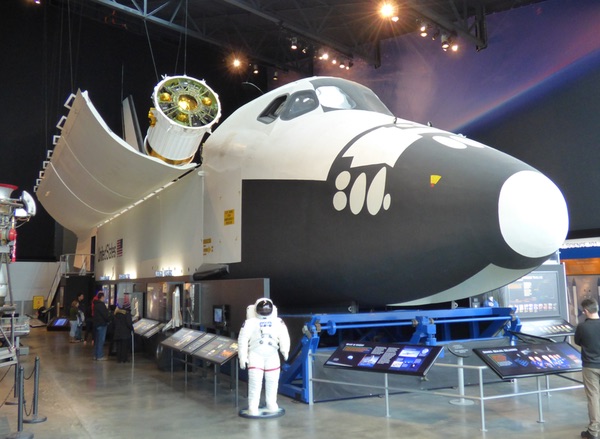Better than the real thingby Jeff Foust
|
| The tours aren’t for the claustrophobic: to get inside the shuttle, you have to crawl through the hatch on the side; getting to the flight deck requires climbing a ladder through an even smaller opening. |
The Museum of Flight, of course, doesn't have an actual Space Shuttle orbiter, having lost out in the competition in 2011 to those other museums, as well as New York’s Intrepid Museum, which got the Enterprise. What the Museum of Flight has on display is, instead, a “full fuselage trainer,” a full-scale mockup of the body of the shuttle used for years by astronauts training to fly the real thing. And, in some respects, it’s better than the real thing.
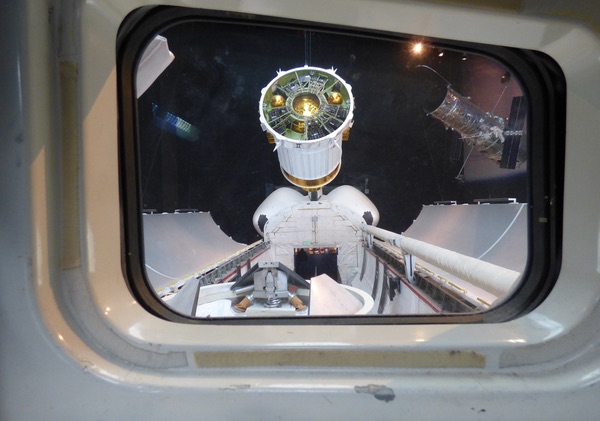 The view from a rear window of the trainer’s crew cabin of its cargo bay, with a Inertial Upper Stage mockup suspended above it. (credit: J. Foust) |
For one, you can go inside the trainer. Regular museum admission ($20 for adults) includes the ability to go into the aft portion of the trainer, and, from there, walk up and down the cargo bay. Overhead hangs a model of an Inertial Upper Stage, which deployed many satellites from the shuttle. It gives the visitor a new appreciation of the size of the shuttle beyond what you normally get walking around or under them, as you are limited to doing with the real orbiters elsewhere.
Moreover, if you’re willing to pay extra, you can go inside the crew cabin of the trainer. On weekends and holidays, the museum offers half-hour tours of the cabin. They’re pricey—$30 for adults—but they do give you a chance to experience what it was like to actually live and work inside a shuttle not readily available elsewhere.
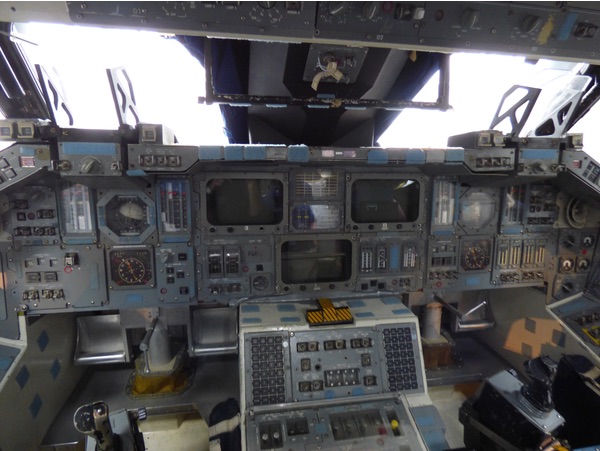 The flight deck of the shuttle trainer and its control panels and displays. (credit: J. Foust) |
The tours aren’t for the claustrophobic: to get inside the shuttle, you have to crawl through the hatch on the side; getting to the flight deck requires climbing a ladder through an even smaller opening. The tours can accommodate up to six people, but on a Saturday morning in early January, only one other person and a tour guide joined me in the tour, which made the interior seem not quite as cramped.
Still, though, the tour gives you a better appreciation of the limited room in the cabin. For those whose impressions of the shuttle’s cabin came from photos and videos that showed what appeared to be relatively spacious accommodations, the tour is reminder of how small that cabin really was, particularly when it contained seven people for up to two weeks at a time.
| There’s not much hardware from entrepreneurial space companies on display in museums today, so Charon is a rare opportunity to see what such companies are developing. |
The museum’s space gallery, located in a separate building across the street from the main museum, connected by a pedestrian bridge, doesn’t have a huge number of space artifacts. It does have the Soyuz TMA-14 capsule, which flew Charles Simonyi to the station in 2009 on the second of his two commercial visits to the International Space Station, and some spacesuits and smaller items from a variety of missions. They’re arranged primarily along the walls of the gallery, telling the story of how people travel to, live in, and work in space.
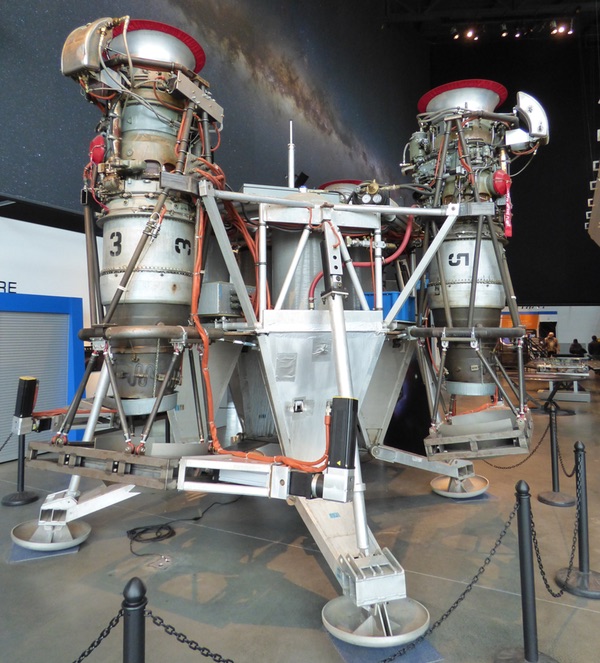 Blue Origin’s Charon, an early test vehicle that demonstrated vertical takeoff and landing using jet engines, on display at the Museum of Flight. (credit: J. Foust) |
One unique item the museum has it a test article from local—and relatively secretive—company Blue Origin. Dubbed Charon, the vehicle was an early demonstrator of vertical takeoff and landing technology, using jet engines instead of rocket motors. The vehicle performed test flights in 2005 at Moses Lake, Washington; video of one of those tests is shown along with the vehicle itself. There’s not much hardware from entrepreneurial space companies on display in museums today—SpaceShipOne at the National Air and Space Museum being the most notable exception—so Charon is a rare opportunity to see what such companies are developing.
The gallery is not the only place in the Museum of Flight that has space artifacts. A separate exhibit in the main museum building has a number of other items, from a mockup of the Destiny module on the ISS that people can walk through to a space Viking lander to an Apollo capsule used in tests on the ground but never flown. There is nothing these that qualifies as a must-see in the same way as the shuttle trainer, but collectively offers visitors an overview of primarily the early history of spaceflight.
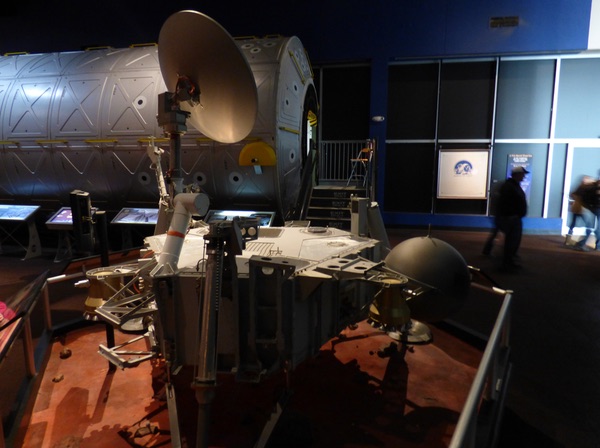 Elsewhere in the museum, a spare Viking lander (foreground) with a mockup of the ISS’s Destiny module behind it. (credit: J. Foust) |
Many of those items in that gallery are not that different from the shuttle trainer: replicas and spares that didn’t fly in space, but in many cases paved the way for spacecraft that did. While museums understandably seek “real” flight hardware, sometimes items that represent that flight hardware can do an even better job of education and public outreach.
